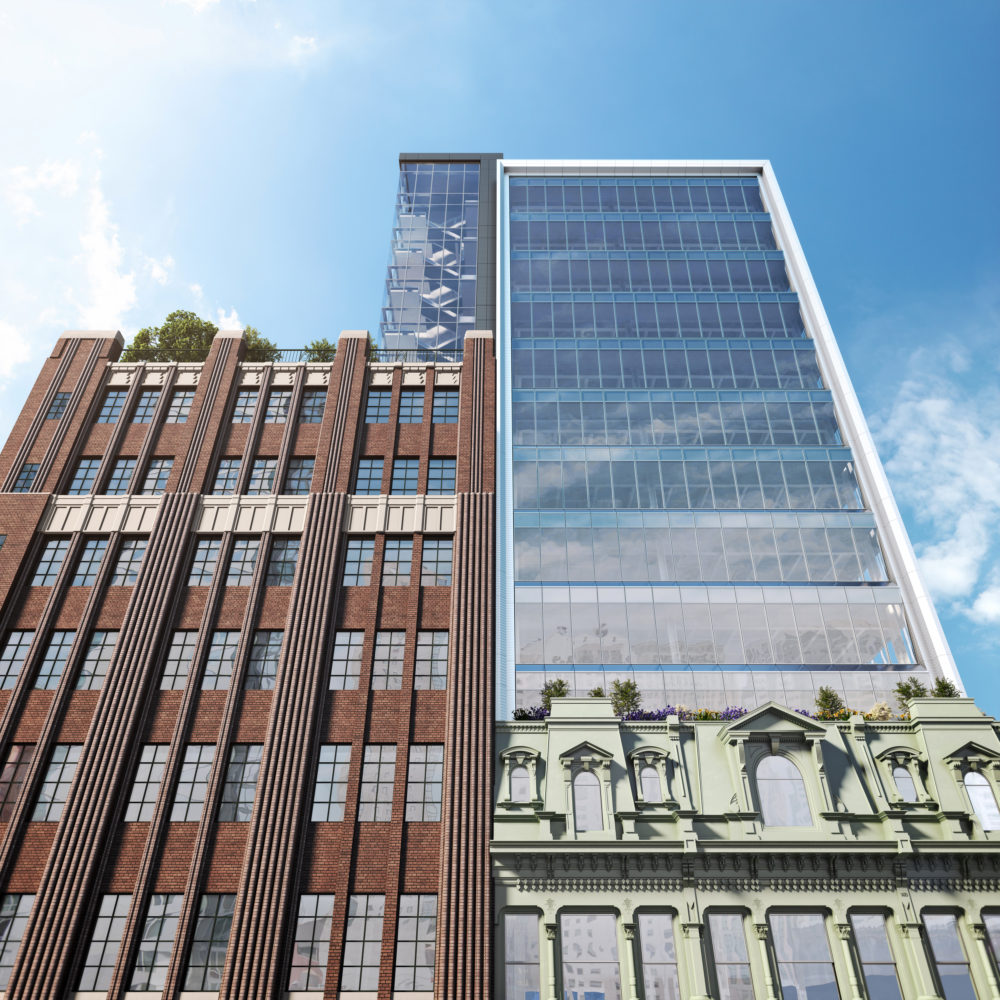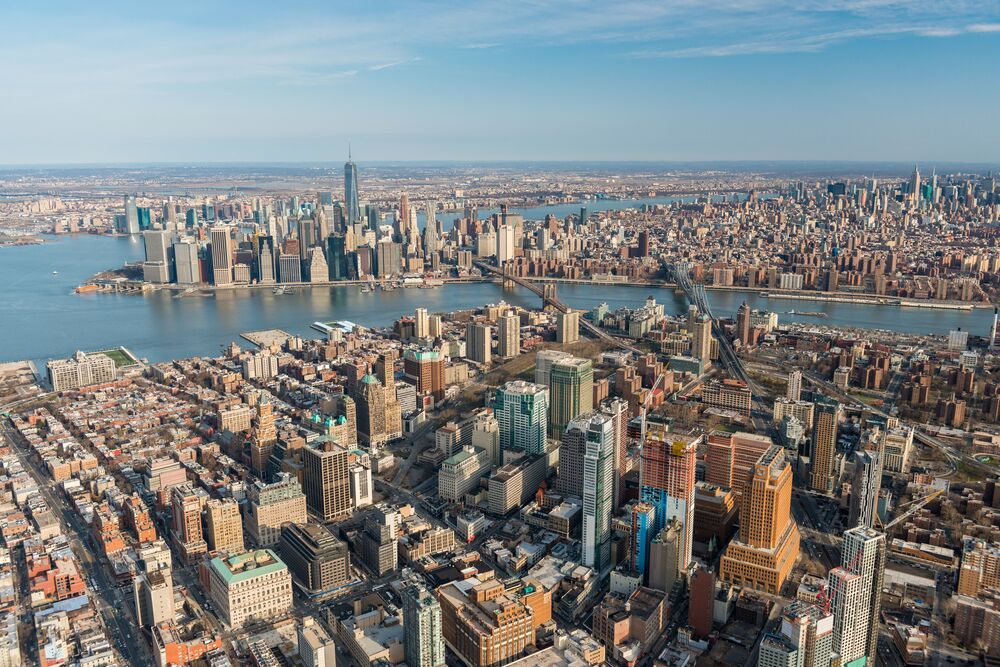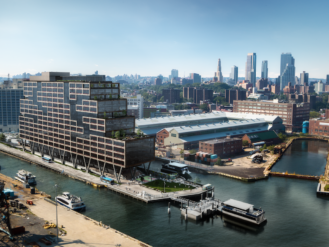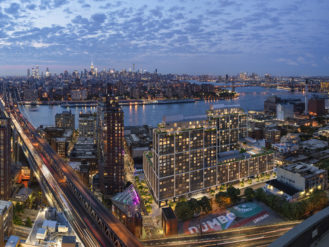Why Downtown Brooklyn Will Sprout Even More Towers
First came the residential skyscrapers. Now comes a wave of office buildings to house a growing tech hub
A new office complex called The Wheeler will be built atop the Macy's store on Fulton Street (Photo courtesy of Tishman Speyer)
The new skyline of Downtown Brooklyn has materialized so quickly that it evokes a scene from the movie Arrival, in which tall, slender spaceships drop suddenly from the sky. But in real-life Brooklyn, this was only the first wave. Now comes another surge in construction that will transform the downtown yet again. While the first new towers were mostly residential buildings (with 6,758 apartments added in the past decade and at least 2,000 more on the way), the second will consist of office buildings with millions of square feet of space.
Far from being a hostile invasion, the new buildings will provide much-needed, amenity-filled workspace for the neighborhood’s exploding population of so-called innovation workers, the digital-age specialists who work at such companies as Etsy, the marketing agency Huge, and JPMorgan Chase’s tech hub. Their numbers grew 45%, to 17,300, in 2012-15, according to a strategic plan for the Brooklyn Tech Triangle (consisting of downtown, Dumbo, and the Navy Yard).

The Wheeler will emphasize post-industrial design, with high ceilings, natural light, and large common areas (Photo courtesy of Tishman Speyer)
“We are bursting at the seams for office and industrial space,” says Andrew Hoan, president and CEO of the Brooklyn Chamber of Commerce. The vacancy rate for commercial buildings in the downtown area is about 3%, which the Downtown Brooklyn Partnership called “staggeringly low” in a recent report. The rate compares to about 9% in Lower Manhattan and 7% in Midtown.
The details of a showpiece office building emerged last week when Tishman Speyer, a major commercial landlord that owns Rockefeller Center, disclosed its renderings for the firm’s first project in Brooklyn. The company plans to build a $500 million, 620,000 sq. ft. office tower atop the existing Macy’s store on Fulton Street. The building will be called The Wheeler, after the 19th century developer Andrew Wheeler who built the original four-story Macy’s building, but it will get a modern vibe from architect Joey Shimoda of Los Angeles and the firm Perkins Eastman.

An aerial view of downtown Brooklyn’s forest of new residential skyscrapers, with Lower Manhattan in the background (Photo credit: Richard Cavalleri/ Shutterstock.com)
The ten-story, terraced building will offer the kind of amenities that millennial workers have come to expect, including 16-foot ceilings, an acre’s worth of outdoor terraces, and dozens of bike stations in the basement. “We are creating an environment that is every bit as innovative, energetic and dynamic as the borough itself,” stated Rob Speyer, CEO of Tishman Speyer. The development firm has reportedly agreed to pay Macy’s $270 million for the space; the department store will renovate and continue to operate.
Several more office projects have launched: One Willoughby Square, a 500,000 sq. ft. office tower from Forest City Ratner Companies and JEMB Realty; a 36-story tower at 625 Fulton St. by the Rabsky Group; and the Pioneer, at 41 Flatbush Ave. “I think we’re at the tip of the iceberg for commercial growth,” said Tucker Reed, former president of the Downtown Brooklyn Partnership and currently a principal in Totem, a real-estate and technology firm. “Companies looking to open a headquarters in New York will start to look at Brooklyn as an alternative to Manhattan. We’re talking about companies that want to move thousands of employees here.”

Outdoor space is a coveted new amenity; the Wheeler will have an acre of terraces (Photo courtesy of Tishman Speyer)
Birth of the New Downtown
The construction boom had its roots in 2004, when the downtown area was rezoned to allow more residential and commercial development. But at first developers focused on residential properties, and then development crashed to a halt after the financial crisis of 2008. Besides the recession, however, a perception lingered of Brooklyn still being a second-class business district, says Hoan. “We have not had a new office building in nearly 20 years because everyone thought that all Brooklyn would ever be was a back office,” says Hoan. “So guess what? We’re nobody’s back office any more, and now we demand front-end, Class A office space that’s not just going to be another midtown office building, a square box with floors of cubicles that look like The Matrix. It’s going to be something that should be different.” Judging from the renderings of the Wheeler, the new towers may fulfill those expectations.
Even so, Brooklyn remains a relative bargain compared to Manhattan. City Point, the giant mixed-use project at 445 Albee Square West that houses a Target store and Alamo Drafthouse, is offering office space at about $55 a sq. ft., vs. rents of $62 a sq. ft. in Lower Manhattan and $84 a sq. ft. in Midtown, according to the New York Times.
The Whole Town
The locomotives of Downtown Brooklyn’s transformation are moving on many parallel tracks. Educational institutions have been aggressive builders too. The NYU Tandon School of Engineering is renovating the 500,000 sq. ft. former MTA building on Jay Street, while nearby the New York City College of Technology (City Tech) is constructing a brand-new, $400 million academic building with a dramatic cantilever design.
At the same time, the Brooklyn Cultural District is gaining strength as a citywide destination, and City Point’s DeKalb Market Hall will be 35,000 sq. ft. brimming with nearly 50 local and regional food purveyors. One of the crowning touches will be the development of the Brooklyn Strand, a proposal to link 21 acres of mostly disconnected parks and plazas, creating a grand promenade running from Borough Hall to Brooklyn Bridge Park. Look out, Paris.
Brooklyn Chamber of Commerce CEO Andrew Hoan’s first name was incorrect in an earlier version.













